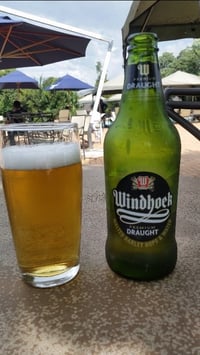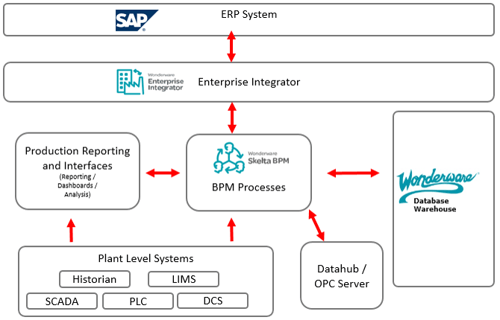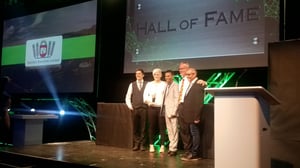Earlier this year, we shared the story of how Namibia Breweries Ltd is using off-the-shelf open OPC software in their operations management system. In that story, we shared how we had learned making beer in one of the world’s driest places takes some unique approaches to power sourcing, water management, and really all resources.
We visited with Namibia Brewing again recently when they attended the X-Change 2018 conference in the beautiful Central Drakensberg region of South Africa. I had the chance to sit down with Annemarie Kruger, Renaldo Du Pisani, and Andre Engelbrecht and, in this blog post, you'll learn about how they have continued to evolve their system since I visited their site in 2017.
 When I visited in 2017, I learned about the highly interdependent processes that, if managed well, result in a profitable brewery and, if not, then profits suffer. Malt is the biggest commodity they use in making beer and, thus, can be the biggest source of problems. You always have to have malt on hand otherwise you can’t make beer! Well in their case, there is no local source of malt.
When I visited in 2017, I learned about the highly interdependent processes that, if managed well, result in a profitable brewery and, if not, then profits suffer. Malt is the biggest commodity they use in making beer and, thus, can be the biggest source of problems. You always have to have malt on hand otherwise you can’t make beer! Well in their case, there is no local source of malt.
Namibia Breweries has to import their ingredients from Europe, which has a long lead time. So knowing when to order and how much to order is crucial. They have limited storage on site and, of course, the raw materials have a shelf life.
Order too little and they can run out which, of course, would halt production. If they order too much and the containers can’t be offloaded because there is no storage room, they have to pay extra fees to store the containers, which adds up quickly. When you add in the fact that they also have to manage currency exchange fluctuations when buying the malt from Europe, the risks are significant.
Because of the risk, there was already a process in place to manage this ordering. However, it involved manual data collection and calculations and checks were only performed once a day. Like any manual process, it was subject to errors and, being human-based, if the humans who own the process were out, a backup person had to be trained and assigned.
Andre set out with his team to reduce this risk to the business by integrating several systems using a tool they already owned, the Cogent DataHub. To achieve this required integrating their brewing MES system Brewmaxx & SAP. They accomplished this using the Wonderware Workflow and Enterprise Integrator solutions, along with Cogent DataHub.
The Cogent Datahub’s role was to bring together the various interfaces available so that, when certain process events happen (which the Cogent DataHub was already monitoring via TOP Server), the necessary triggers in Wonderware Enterprise Integrator would happen. The Wonderware software would kick off the right workflows so that data from Brewmaxx could be gathered via SQL queries and sent for final approval, and eventual issuance of the SAP purchase order.

Annemarie shared “the fact that we could leverage the Cogent DataHub scripting engine, OPC interfaces, and file creation abilities in a tool we had already paid for in the prior project was a bonus for the cost of this project. By being able to set triggers for just about anything, we were able to be very creative in our solution. Each time we do something new with the Cogent DataHub, we are amazed at the flexibility that it provides us to bring things together and make them work.”
 Andre added, “By reducing the risk of over- or under-ordering significantly, this project has already paid for itself. Had there been just one incident of under-ordering, the added costs of that would have been way more than the cost of this project”.
Andre added, “By reducing the risk of over- or under-ordering significantly, this project has already paid for itself. Had there been just one incident of under-ordering, the added costs of that would have been way more than the cost of this project”.
For their efforts, the Namibia Brewing Ltd team was awarded Best Manufacturing Operations Management application at the X-Change 2018 conference. This was the 2nd time in 3 years that Namibia Brewing Ltd has been recognized for their innovative approaches.
We applaud the team at Namibia Brewing for their creativity, resourcefulness and drive to continue to improve their operational effectiveness and reduce risk using the Cogent DataHub and TOP Server.
References
The links below provide more information about the Software Toolbox products used in the NBL applications described above:
Don't forget to  for more stories, use cases and how-to's like these!
for more stories, use cases and how-to's like these!




